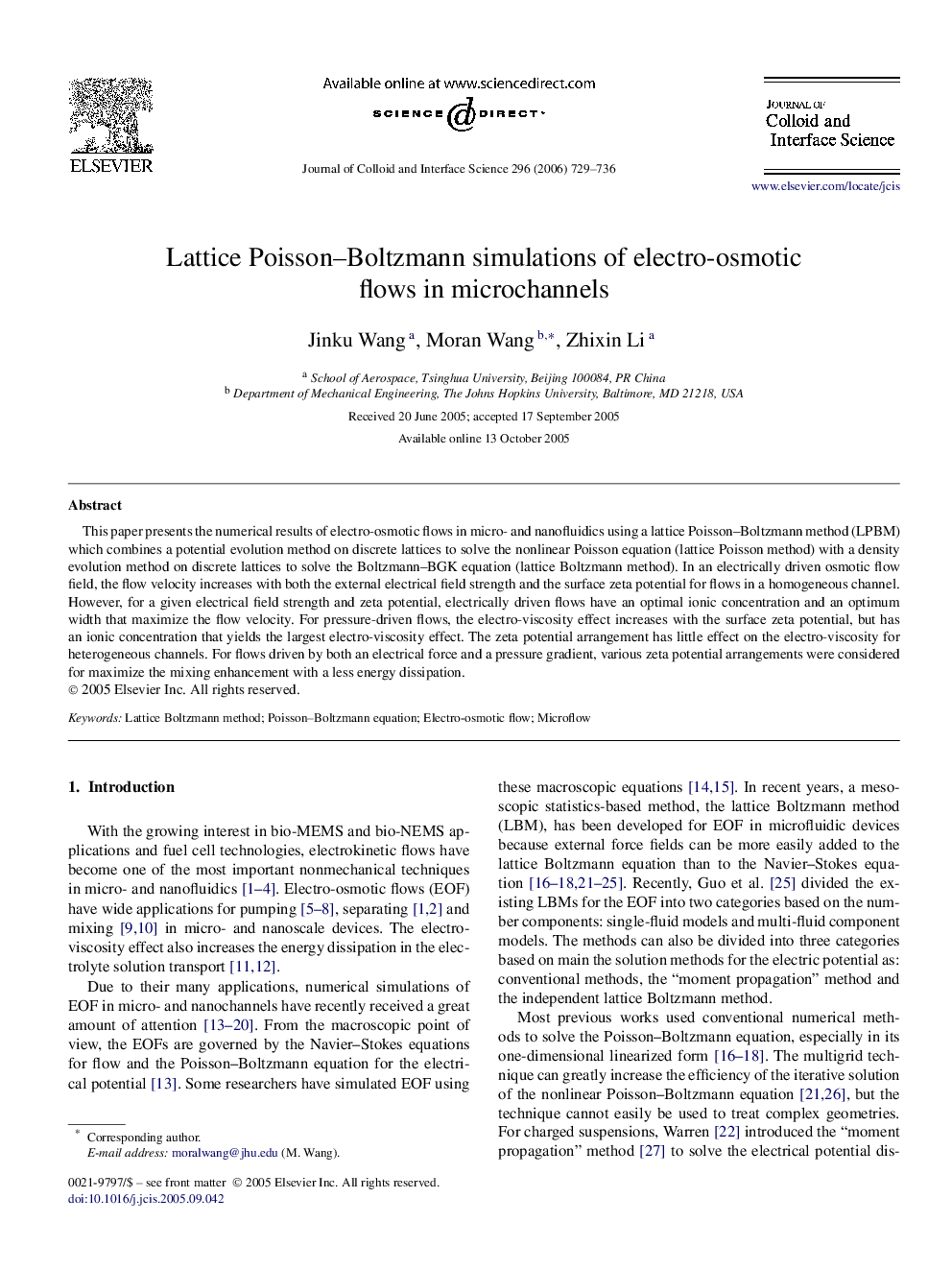| Article ID | Journal | Published Year | Pages | File Type |
|---|---|---|---|---|
| 613769 | Journal of Colloid and Interface Science | 2006 | 8 Pages |
This paper presents the numerical results of electro-osmotic flows in micro- and nanofluidics using a lattice Poisson–Boltzmann method (LPBM) which combines a potential evolution method on discrete lattices to solve the nonlinear Poisson equation (lattice Poisson method) with a density evolution method on discrete lattices to solve the Boltzmann–BGK equation (lattice Boltzmann method). In an electrically driven osmotic flow field, the flow velocity increases with both the external electrical field strength and the surface zeta potential for flows in a homogeneous channel. However, for a given electrical field strength and zeta potential, electrically driven flows have an optimal ionic concentration and an optimum width that maximize the flow velocity. For pressure-driven flows, the electro-viscosity effect increases with the surface zeta potential, but has an ionic concentration that yields the largest electro-viscosity effect. The zeta potential arrangement has little effect on the electro-viscosity for heterogeneous channels. For flows driven by both an electrical force and a pressure gradient, various zeta potential arrangements were considered for maximize the mixing enhancement with a less energy dissipation.
